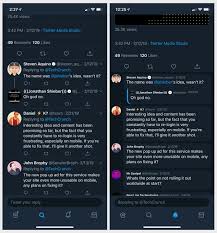The idea was that by more clearly defining which reply was in response to which tweet, it would make conversation threads easier to follow, and therefore improve engagement. But in practice, Twitter found that wasn’t the case. According to user feedback, the updated reply format “made convos harder to read & join”.
This is fair enough, but the learning and development process here is very broad.
As noted, Twitter has been testing variations of this since 2018 and has been live testing it since February, so that’s a full 10 months of testing to come to this conclusion. I guess, Twitter’s just being thorough – and in fairness, it has had a lot of other issues to deal with that would’ve taken priority over that time.
But it still feels like Twitter is struggling to innovate and come up with fresh ideas. For all its various new features and updates, the Twitter experience is still much the same as it was when the app first launched back in 2006.
That’s in variance to Facebook, which now has Stories, Marketplace, business Pages, groups – there’s a range of ways in which Facebook has evolved to cater to new use cases and user needs. Or Instagram – Instagram now has Stories as well, along with IGTV, Reels, while Direct is also a more prominent feature in the app. The leading social apps have added major new elements that have changed user habits and kept people engaged – while Twitter has just spent 10 months working out whether people like threaded replies or not.
Really, it was always a minor update, and the impacts of its implementation, or not, were minimal. But if you were a fan of the threaded format, it’s now gone.
As has its twttr test app:
We appreciate the feedback you gave us through this run of our prototype app twttr. For now, we’re turning it off so we can work on new tests to improve the conversation experience on Twitter.
Twitter launched the test app in March last year as part of its effort to be more collaborative on product updates and tweaks. Twitter invited all users to apply for access and to share their feedback on features in testing, but it hadn’t updated the app for some time, and to be honest, most users likely forgot they even had it (note: I did).
But now, it too is gone, and that may also mark a new point in Twitter’s testing process, where maybe it doesn’t seek to be so collaborative, and invite mass feedback on changes, which then get more focus than they likely require.
Or it’ll try something else – either way, the main point of note here is that Twitter still hasn’t worked out the best way to implement real, significant changes to its app, or what those changes should even be.
I mean, it added Fleets. That’s something, I guess. Though I still feel like Fleets are just the second coming of Twitter Moments – a heavily hyped new addition, which users get excited about for a few weeks? Then it just slowly dies out, till Twitter acknowledges that no one was ever really into it.
‘Oh yeah’, I hear you say, ‘Moments, yeah I remember that.’
That’s the same thing you’ll be saying about Fleets about this time next year, along with audio tweets, the Twitter camera, audio rooms, etc.
Twitter remains an essential platform in many respects, but innovation is just not its thing.

Your article helped me a lot, is there any more related content? Thanks!